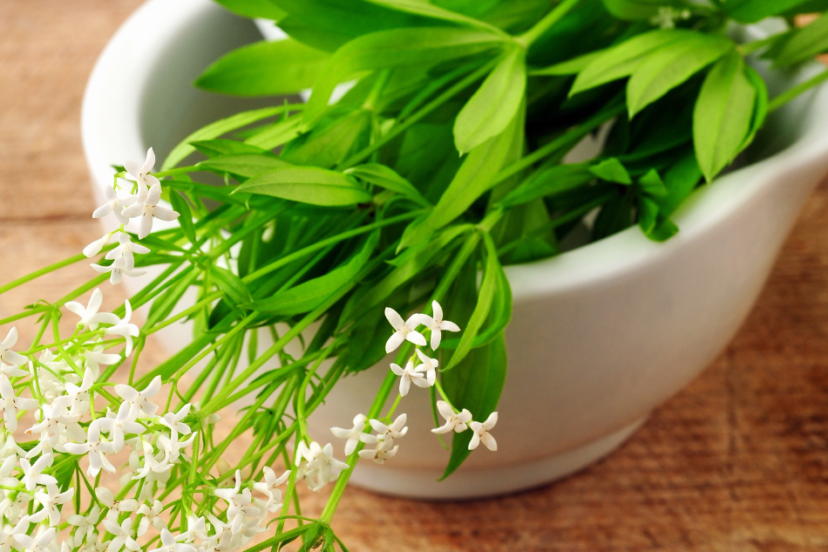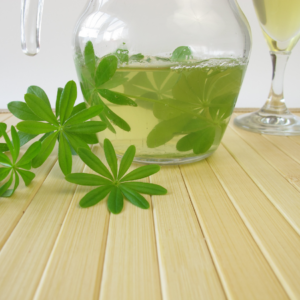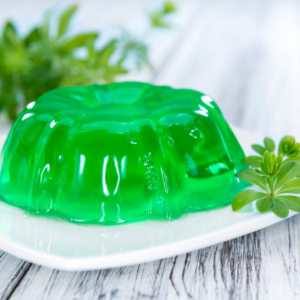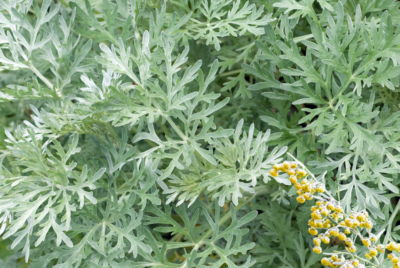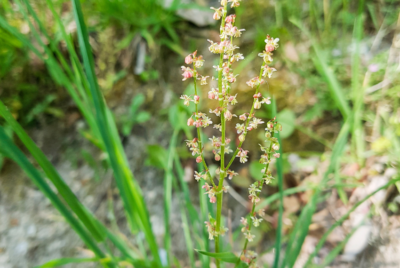Sweet Woodruff Benefits
You may have never heard of Woodruff, but this little-known herb packs big health benefits worth exploring. From its anti-inflammatory properties to its potential to improve digestion, Woodruff is a true hidden gem in the world of natural remedies and has a quaint nick name ‘kiss me quick’. Let’s explore into the wonders of Woodruff and uncover why this herb deserves a spot in your wellness routine.
Key Takeaways:
- Woodruff is a little-known herb that packs significant health benefits often overlooked by many.
- Woodruff can be used in a variety of ways – from teas to desserts, adding a unique and pleasant flavor profile.
- Woodruff is known for its calming effects and can be a great natural remedy for stress and anxiety.
- Woodruff is rich in antioxidants, which can help fight off free radicals and reduce inflammation in the body and is also an anti-coagulant and a diuretic.
- Woodruff may improve digestion and promote good gut health, making it a valuable addition to your diet.

The Mysterious Woodruff
Uncovering the History of Woodruff
An intriguing herb with a rich history, woodruff has been used for centuries for its medicinal properties and delightful fragrance. With its origins in Europe, this herb was highly valued for its ability to add flavor and aroma to drinks and desserts. In ancient times, woodruff was even thought to possess mystical properties, with some cultures believing it could ward off evil spirits and bring good luck.
Debunking Common Myths About Woodruff
One common myth about woodruff is that it is toxic to consume. However, this is not the case. While consumption in large quantities may cause adverse effects, moderate use of woodruff is generally safe and even beneficial for health. In fact, woodruff has been traditionally used to promote relaxation and improve sleep quality due to its mild sedative properties.
For instance, woodruff is often used in Germany to make May wine, a traditional springtime beverage believed to bring good fortune. Additionally, woodruff is commonly used in herbal medicine to aid digestion and reduce inflammation. It’s important to note that while woodruff can offer health benefits, it should always be consumed in moderation.

Woodruff’s Health Benefits
While Woodruff may not be a household name when it comes to herbs, its health benefits are certainly worth noting. This unassuming plant packs a powerful punch when it comes to improving overall well-being and vitality.
Reducing Inflammation and Pain
For those seeking natural remedies to alleviate inflammation and pain, Woodruff may be a game-changer. This herb contains anti-inflammatory properties that can help reduce swelling and discomfort in the body. By incorporating Woodruff into your wellness routine, you may experience relief from conditions such as arthritis, muscle soreness, and joint pain.
Boosting Immune System Function
Reducing the risk of illness and enhancing immune system function is crucial for maintaining optimal health. Woodruff offers immune-boosting benefits that can help your body ward off common colds, infections, and seasonal allergies. By including Woodruff in your daily regimen, you may find yourself feeling more resilient and protected against environmental threats.
This herb’s immune-boosting properties can help strengthen your body’s defenses and support overall wellness.
Aiding Digestive Health
Functioning as a gentle digestive aid, Woodruff can help alleviate symptoms of indigestion, bloating, and abdominal discomfort. This herb has soothing properties that can promote a healthy gut and improve digestion. By incorporating Woodruff into your diet or as a supplement, you may experience fewer digestive issues and greater comfort after meals.
Understanding the benefits of Woodruff and incorporating this powerful herb into your daily routine can lead to improved well-being and overall health.
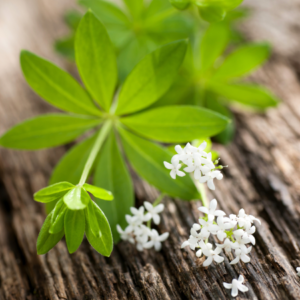
The Science Behind Woodruff’s Magic
Bioactive Compounds and Their Effects
One of the reasons behind woodruff’s magical health benefits lies in its bioactive compounds, which include coumarin, tannins, and flavonoids. Coumarin, for example, is known for its anticoagulant properties, which can help improve blood circulation and prevent blood clots. Tannins and flavonoids, on the other hand, have antioxidant and anti-inflammatory effects that can contribute to overall health and well-being.
Woodruff’s Antioxidant Properties
Compounds found in woodruff possess potent antioxidant properties that help combat oxidative stress and reduce inflammation in the body. Antioxidants play a crucial role in protecting cells from damage caused by free radicals, which are unstable molecules that can contribute to various chronic diseases and aging.
A diet rich in antioxidants, such as those found in woodruff, may help lower the risk of developing conditions like heart disease, cancer, and neurodegenerative disorders.
Interactions with Medications and Supplements
Properties
Behind the scenes, it’s important to note that woodruff may interact with certain medications and supplements. If you are taking prescription drugs or other dietary supplements, it’s advisable to consult with a healthcare professional before incorporating woodruff into your routine. Some compounds in woodruff may affect the effectiveness of medications or interact with other supplements, potentially leading to unwanted side effects.
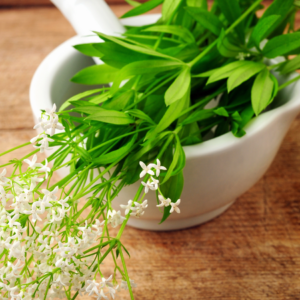
Woodruff in Traditional Medicine
Ancient Uses and Remedies
Medicine the history of Woodruff dates back centuries, with references to its use found in ancient Greek and Roman texts. The herb was often used to treat various ailments, including digestive issues, insomnia, and even as a natural pain reliever. In traditional medicine, Woodruff was highly regarded for its calming properties and was believed to help improve circulation and promote overall well-being.
Woodruff in Folk Medicine and Herbalism
Any Throughout history, Woodruff has been a staple in folk medicine and herbalism practices. It was commonly utilized as a remedy for anxiety and stress relief, as well as to alleviate symptoms of respiratory conditions. The herb was also believed to have properties that could aid in promoting healthy skin and hair.
Medicine Today, Woodruff continues to be used in alternative medicine practices due to its reported anti-inflammatory and antioxidant properties. Some studies suggest that Woodruff may help reduce inflammation and protect against oxidative stress, making it a potential candidate for natural remedies for various health conditions.
Modern Applications in Alternative Medicine
Applications: Modern alternative medicine now commonly utilizes woodruff for its diverse health benefits. People incorporate the herb into teas, tinctures, essential oils, and topical creams. Its potential therapeutic uses are gaining popularity.
Some individuals use Woodruff as a natural remedy for headaches, menstrual cramps, and even as a sleep aid.
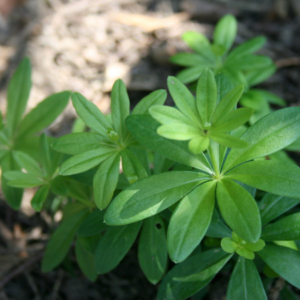
Growing and Harvesting Woodruff
Once again, it’s time to dig into the fascinating world of Woodruff – the little herb with big health benefits! If you’re intrigued by this unique herb and want to cultivate it yourself, here’s a helpful guide on growing, harvesting, and preserving Woodruff.
Cultivating Woodruff in Your Garden
Cultivating Woodruff in your garden is a rewarding experience. This herb thrives in shaded areas with moist, well-draining soil. Plant Woodruff in the spring and watch it spread its fragrant leaves throughout the summer. Regular watering and occasional fertilizing will keep your Woodruff patch healthy and productive.
Wildcrafting and Sustainable Harvesting
An necessary aspect of wildcrafting and sustainable harvesting Woodruff is to ensure you are not depleting wild populations. Harvesting Woodruff responsibly involves identifying patches to harvest from, leaving the majority of the plant intact to continue growing. This approach ensures the herb’s availability for future harvests and helps preserve its natural habitat.
Your Woodruff harvest should be mindful and sustainable for the environment. If you choose to wildcraft this herb, familiarize yourself with local regulations regarding wild plant harvesting. By adopting sustainable practices, you can enjoy the benefits of Woodruff while protecting its longevity in the wild.
Drying and Preserving Woodruff for Later Use
One of the best ways to preserve Woodruff for later use is by drying it. To dry Woodruff, bundle a few sprigs together and hang them in a dry, well-ventilated area. Once dried, remove the leaves from the stems and store them in an airtight container. Dried Woodruff retains its flavor and medicinal properties and can be used in teas, sachets, or culinary dishes.
Harvesting Woodruff at the right time and using proper drying techniques can ensure you have a bountiful supply year-round. Whether you cultivate Woodruff in your garden or harvest it sustainably in the wild, the process of drying and preserving this herb allows you to enjoy its benefits long after the growing season ends.
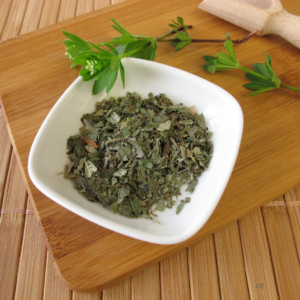
Preparing Woodruff for Consumption
Many people wonder how they can incorporate woodruff into their daily routine. One popular way is by making teas, tinctures, and infusions.
Teas, Tinctures, and Infusions
For a soothing woodruff tea, steep a handful of fresh or dried leaves in hot water for 5-10 minutes. This aromatic infusion not only tastes delightful but also provides a range of health benefits, from calming properties to aiding digestion. Tinctures, made by soaking woodruff in alcohol for several weeks, are another convenient way to enjoy the herb’s benefits.
Cooking with Woodruff: Recipes and Ideas
An exciting way to introduce woodruff into your diet is by incorporating it into various recipes. This herb adds a unique, slightly sweet flavor to dishes, making it a versatile ingredient for both sweet and savory creations. From adding chopped woodruff leaves to salads and dressings to infusing creams and syrups with its essence, the possibilities are endless. Experiment with woodruff in your kitchen to discover a whole new world of flavors.
Recipes: Looking for some culinary inspiration? Try making a refreshing woodruff sorbet, a delicate woodruff-infused panna cotta, or a batch of woodruff sugar cookies for a unique twist on traditional treats. The herb’s subtle taste will add a delightful hint of freshness to your favorite desserts.
Woodruff Supplements and Capsules
Tinctures and capsules offer a convenient way to enjoy the benefits of woodruff on the go. Woodruff Supplements and Capsules: These concentrated forms of the herb provide a quick and easy way to incorporate woodruff into your daily wellness routine. Whether you’re looking to support your immune system or promote relaxation, these supplements offer a convenient solution for busy lifestyles.
Understanding the various ways to prepare and consume woodruff can help you fully appreciate the numerous health benefits this little-known herb has to offer. So, why not explore the world of woodruff and add a touch of herbal magic to your life?
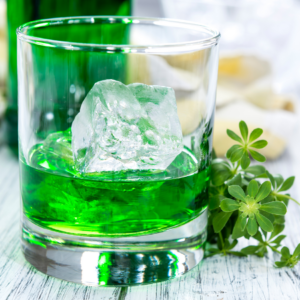
Summing up
With these considerations in mind, it’s clear that woodruff is a little-known herb with significant health benefits, ranging from digestive aid to stress relief and even potential anti-inflammatory properties. This article has shed light on this underrated herb, encouraging readers to explore its uses and potential advantages for their well-being. Next time you come across woodruff at your local market or in a garden, don’t just overlook it – consider giving this wonder herb a try and discover its big health benefits!
FAQ
Q: What is Woodruff and what are its health benefits?
A: Woodruff is a little-known herb that has numerous health benefits, including anti-inflammatory properties, antioxidant effects, and potential benefits for improving digestion.
Q: How can Woodruff be incorporated into one’s daily routine?
A: Woodruff can be used in various ways, such as brewing it into a tea, adding it to salads or desserts for a unique flavor, or infusing it into syrups or tonics for a health boost.
Q: Are there any precautions to consider when using Woodruff?
A: While Woodruff is generally safe for most people, individuals who are pregnant, breastfeeding, or taking certain medications should consult with a healthcare provider before using it to avoid any potential interactions or adverse effects.
Q: Where can one find Woodruff for purchase?
A: Woodruff can sometimes be found in health food stores, specialty herb shops, or online retailers that sell herbs and spices. It may also be possible to grow Woodruff in a garden or purchase it from local farmers markets.
Q: Can Woodruff be used as a natural remedy for common ailments?
A: Yes, Woodruff has been traditionally used as a natural remedy for conditions like insomnia, anxiety, and headaches. Its calming properties and mild sedative effects make it a popular choice for promoting relaxation and supporting overall well-being.
Coriander – Digestive Aid and anti-inflammatory Superfood
Horehound – Benefits of the Forgotten Herb!
Sweet Woodruff, our helpful Galium Family Friend
